Christianity has been the largest religion in the U.S. since day one. According to the latest studies conducted by Pew Research Center, roughly 70 percent of today’s U.S. population identifies as one Christian denomination or another.
While every Christian denomination believes in God and the teachings of Jesus, each one has its own unique traditions, methods of worship and philosophy. Although more Americans identify as non-religious than ever before, these seven branches of Christianity are still the most widely practiced.
7. Orthodox Christian
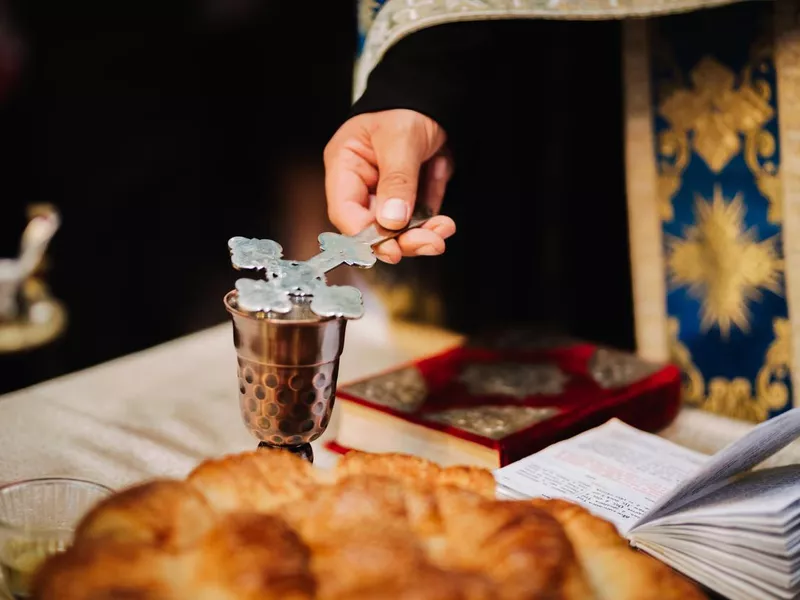
Getty Images
Percent practicing in the U.S.: 0.5%
Estimated population: 1.5 million
Note: The practicing percentage comes from a 2014 Pew Research Center study that polled about 35,000 people.
Bottom Line: Orthodox Christian
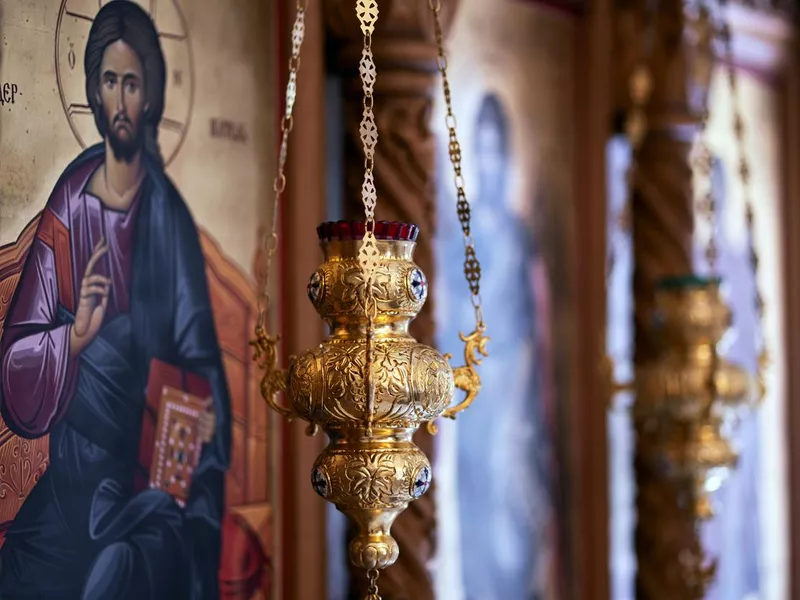
Getty Images
Orthodox Christianity encompasses a few denominations, including the Greek Orthodox Church, the Russian Orthodox Church and the Orthodox Church in America. All branches share a similar philosophy: that the Christian Faith and the Church are so interconnected that it’s impossible to embrace one without the other. The traditions of the Orthodox Church are essential to the understanding and practice of Orthodox Christianity.
The Orthodox Church also teaches that the Holy Spirit proceeds from God the Father, while Catholics and Protestants believe the Holy Spirit proceeds from the Father and Son (Jesus Christ). Another key difference is that Orthodox Christians celebrate Christmas Day on Jan. 7 rather than Dec. 25.
An Orthodox Christian Who Looks Familiar: Tom Hanks
You’ve seen Tom Hanks in everything from Forrest Gump to The Polar Express, and the Hollywood star is actually an Orthodox Christian. He married into his faith in 1988. His wife, actress Rita Wilson, is Bulgarian and Greek, and has been a practicing member of the Greek Orthodox Church since birth.
She and Hanks were married in the church she was baptized at, and their children were also baptized in the Greek church. He went as far as to earn Greek citizenship in 2019.
6. Jehovah’s Witness

Getty Images
Percent practicing in the U.S.: 0.8%
Estimated population: 2.5 million
Bottom Line: Jehovah’s Witness
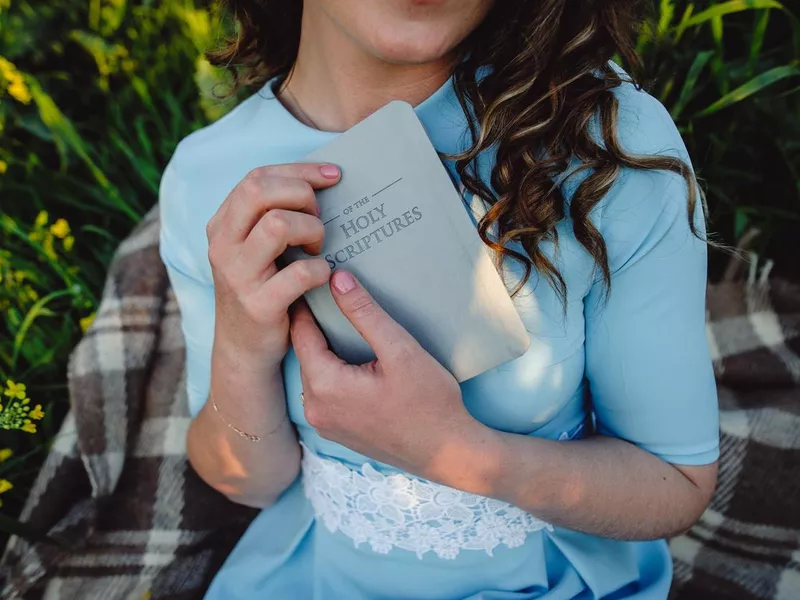
Getty Images
Jehovah’s Witnesses, unlike most other Christian denominations in the U.S., believe in a singular God called Jehovah, as opposed to the Holy Trinity (God, the Son and Holy Spirit). Jehovah’s Witnesses also believe that the world’s end will soon come. They don’t celebrate most holidays, including birthdays, and they don’t celebrate religious holidays with any pagan origins. This includes Christmas and Easter. Another reason they don’t celebrate Christmas is that there’s no definitive proof that Jesus was born on Dec. 25.
Jehovah’s Witnesses also don’t believe in getting blood transfusions, and followers are encouraged to avoid close relationships with people of other faiths. Many also discourage pursuing higher education. Additionally, they believe Satan is responsible for human corruption on Earth, leading people astray via governments, businesses and media. They also believe that when someone dies, they stop existing entirely.
A Jehovah’s Witness Who Looks Familiar: Serena and Venus Williams
Champion tennis stars Serena Williams and Venus Williams were raised Jehovah’s Witness.They don’t discuss their beliefs publicly very much, but their faith was an important part of their family life early on.
While it’s unclear how seriously they practice their religion today, Serena was recently baptized at the Jehovah’s Witness Assembly in West Palm Beach, Florida, and is reportedly raising her kids as Jehovah’s Witnesses as well.
5. Church of Jesus Christ of Latter-Day Saints

Getty Images
Percent practicing in the U.S.: 1.6%
Estimated population: 6.6 million
Bottom Line: Church of Jesus Christ of Latter-Day Saints
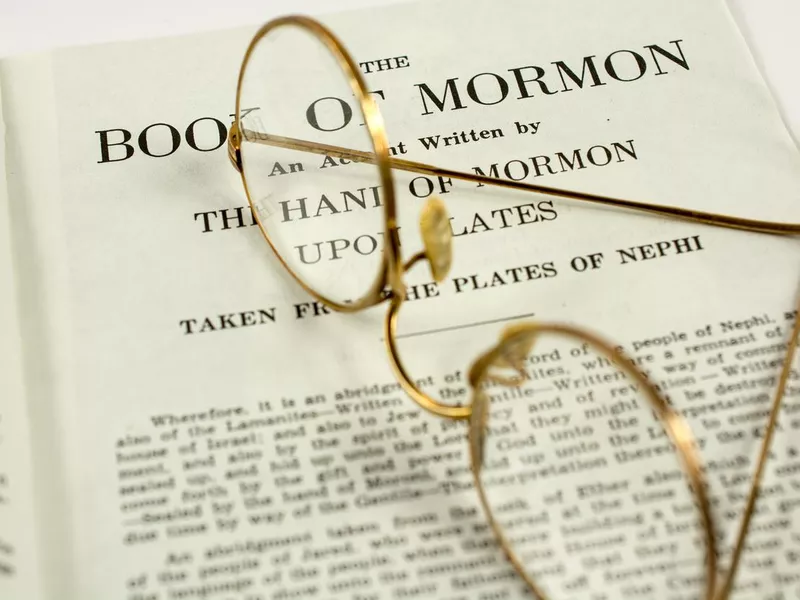
Getty Images
The highest population density of Latter-Day Saints (also known as Mormons) in the U.S. is in Utah. Mormons believe that the Book of Mormon was set in North America, and they also believe the Garden of Eden was in North America. Unlike other Christian denominations in the U.S., they don’t believe in the Holy Trinity, viewing God the Father as more significant than Jesus.
Mormons also believe that every person has a life before birth in a spirit realm shared with God. After death, their soul returns to this realm to be later resurrected. They also believe in three kingdoms of glory that people are sent to based on whether they followed the Gospel, didn’t follow it or disavowed it entirely.
A Member of the Church of Jesus Christ of Latter-Day Saints Who Looks Familiar: Katherine Heigl
Katherine Heigl might be a famous LA star today, but before she was on Grey’s Anatomy, she led a quiet life. She was raised in Utah, where over half the population is Mormon. After the death of her brother in a car accident, her family found solace in the Mormon faith.
At the time, Heigl was only seven, and she later credited her parents’ devotion to the Church of Jesus Christ of Latter-Day Saints with providing a sense of structure and stability throughout her childhood. She doesn’t practice Mormonism today, but she still has respect for her roots.
4. Historically Black Protestant
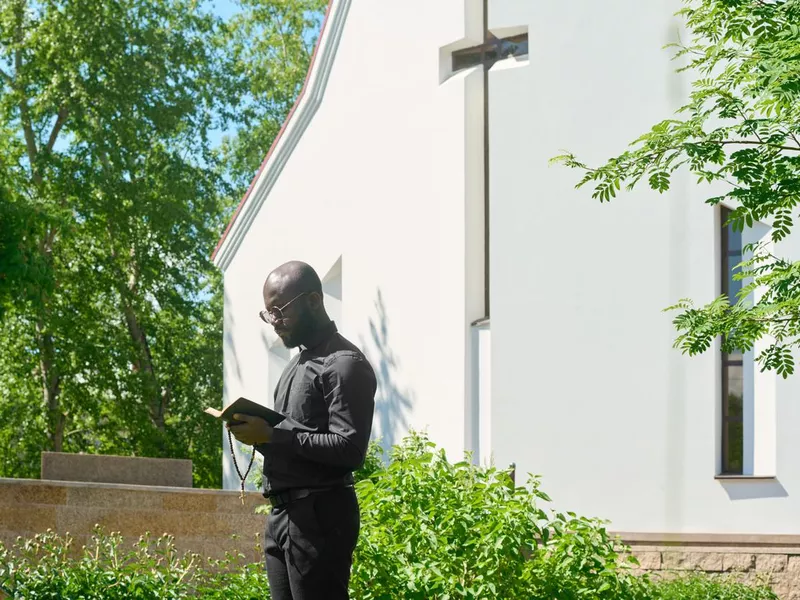
Getty Images
Percent practicing in the U.S.: 6.5%
Estimated population: 21 million
Bottom Line: Historically Black Protestant
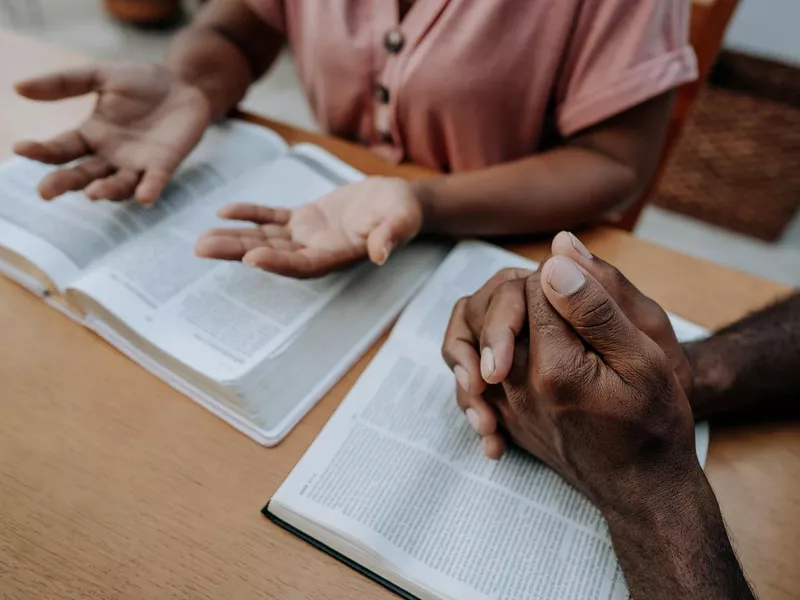
Getty Images
Over half of Black adults in the U.S. identify as members of the historically Black Protestant tradition. This encompasses seven different denominations: the Christian Methodist Episcopal Church, the Church of God in Christ, the African Methodist Episcopal Church, the African Methodist Episcopal Zion Church and three National Baptist Conventions, plus those who identify as non-denominational Protestants.
Black Americans are more likely than the overall American public to identify as Protestant, especially among older generations. The reason Black Protestants are listed in their own category is because there are strong belief trends that differ from that of Mainline Protestants due to the complicated history of race relations and socioeconomic status in the U.S. They’re more likely to identify as Democrats than white Protestants as well as to vote pro-choice.
A Historically Black Protestant Who Looks Familiar: Barack Obama
Barack Obama faced pointed questions about his religious background when he was running for office. That was, quite frankly, ludicrous in a country founded on religious freedom for all, but regardless, he put the matter to rest once and for all.
“I’ve been to the same church – the same Christian church for almost 20 years,” Obama told NBC.
In reality, he was baptized into the United Church of Christ, a popular Historically Black protestant denomination, formally joining it in 1988.
3. Mainline Protestant
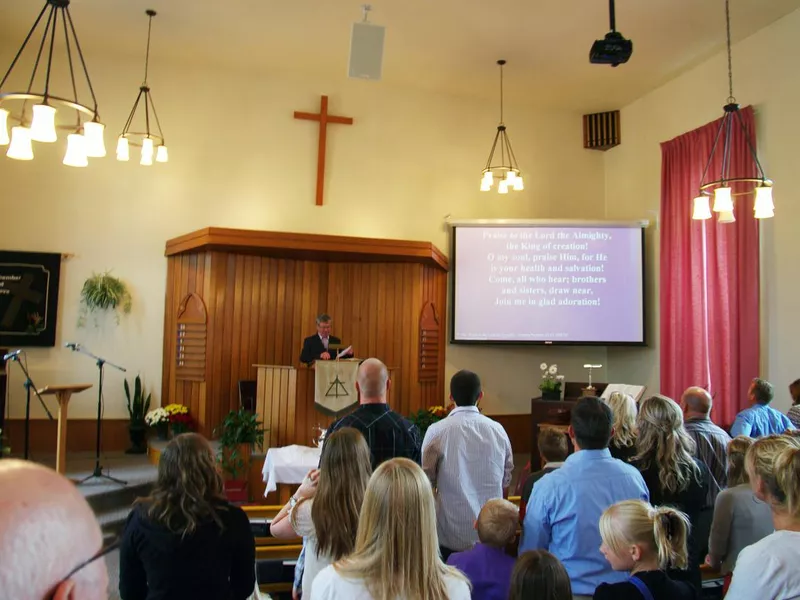
Getty Images
Percent practicing in the U.S.:14.7%
Estimated population: 49 million
Bottom Line: Mainline Protestant
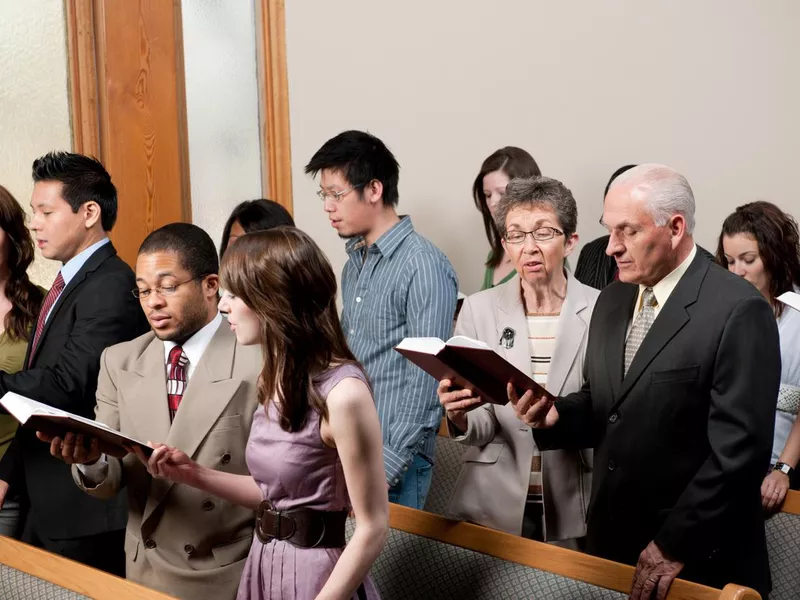
Getty Images
There are several Protestant denominations in the U.S., but the Mainline Protestant denomination is the second most common and encompasses the original “seven sisters of American Protestantism,” including American Baptist Churches USA, the Christian Church (Disciples of Christ), the Episcopal Church, the Evangelical Lutheran Church in America, the Presbyterian Church (USA), the United Church of Christ and the United Methodist Church.
Compared to their Evangelical counterparts, Mainline Protestants tend to be more politically moderate, focusing on solving economic gaps and social issues with a more liberal mindset. Most of them also have a modern theological take on Christianity, viewing the Bible as a historical document that should be interpreted based on the realities of current human existence, and they’re known for having a more flexible viewpoint on the process of salvation. They do believe that following the teachings of Jesus is the way to salvation, but many also believe that people outside the faith may have access to salvation as well, via good deeds and God’s grace.
A Mainline Protestant Who Looks Familiar: Sandra Day O’Connor
Sandra Day O’Connor was the first woman to serve on the Supreme Court of the United States. Regardless of whether you agree with her political stance, her name demands respect. She graduated high school two years early, breezed through law school, and worked as a judge in a state supreme court for just two years before Regan nominated her to become the first female justice on United States Supreme Court in 1981.
On a more personal note, she retired in 2006 to take care of her husband, who’s living with Alzheimer’s disease, and she remains a practicing Episcopalian.
2. Catholic
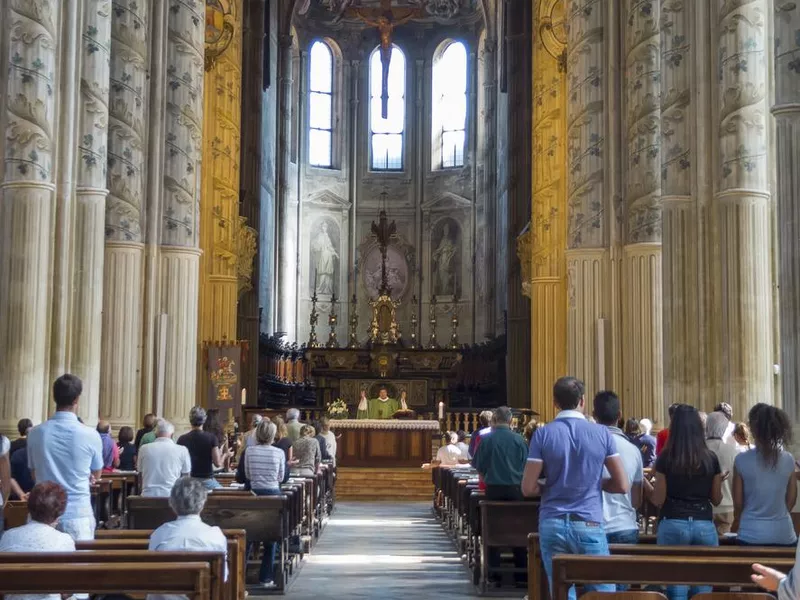
Flory / Getty Images
Percent practicing in the U.S.: 20.8%
Estimated population: 70 million
Bottom Line: Catholic
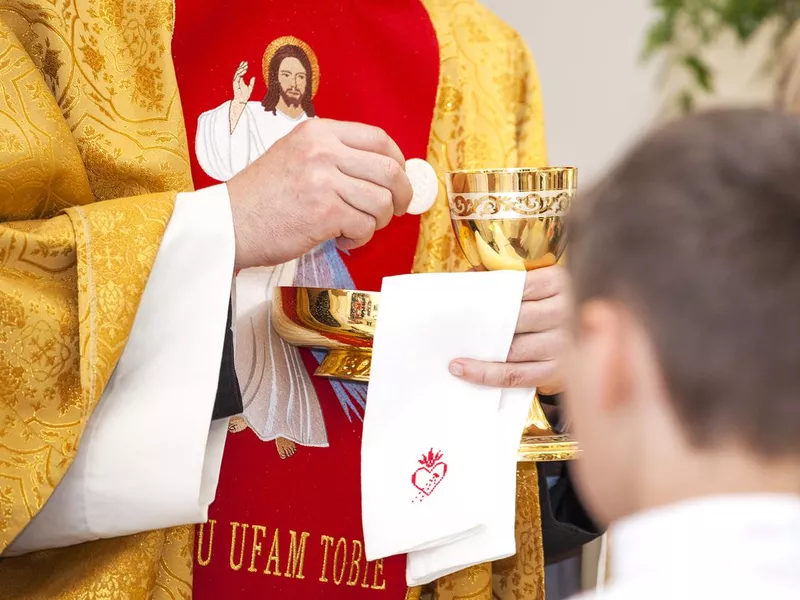
Getty Images
The Catholic Church has been active in the U.S. since the colonial era, thanks to Spanish, French and Mexican influences. The number of Catholics in the U.S. rose in the mid- and late-1800s when Catholic immigrants flocked from Germany, Ireland and other parts of Europe.
The most notable differences between Catholicism and other Christian denominations include the beliefs in the importance of the Virgin Mary, saints and the Pope. Catholics also follow strong traditions, like the practice of taking communion after being officially welcomed as a full-fledged members of the faith by receiving the First Holy Communion at a young age. Those who identify as Catholic in the U.S., however, vary widely in personal beliefs. Some are very devout, attending mass weekly and practicing Catholicism in a literal sense. Others were born into Catholic families and were baptized but don’t actively practice it as adults.
A Catholic Who Looks Familiar: Mark Wahlberg
Mark Wahlberg wasn’t just acting when he starred in 2022’s Father Stu, a movie about a former criminal who devotes his life to becoming a Catholic priest, no matter the cost. (Check out the trailer below!) Wahlberg is a devout Catholic in real life, even appearing on the Today Show with a black cross on his forehead for Ash Wednesday.
He does his best not to force his faith on anyone, but he refuses to apologize for it either. By our standards, that counts as an amazing Catholic.
1. Evangelical Protestant
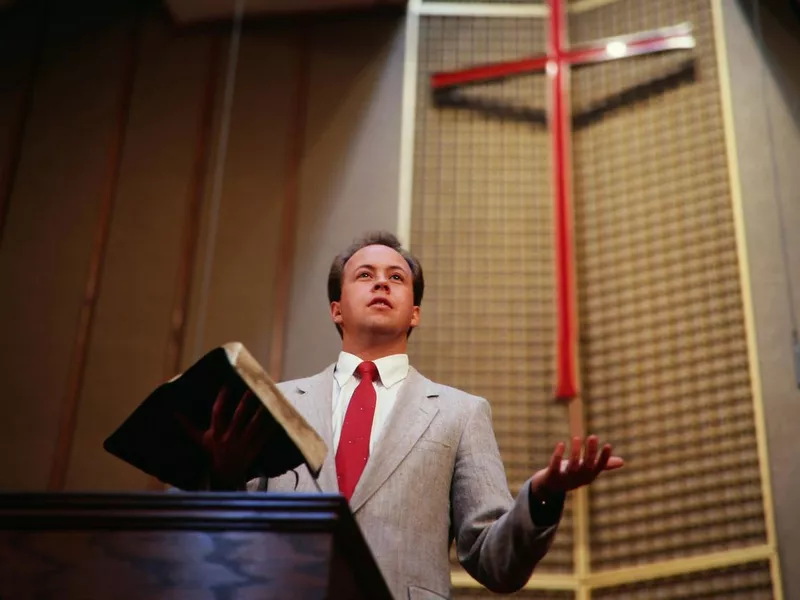
Getty Images
Percent practicing in the U.S.: 25.4%
Estimated population: 84 million
Bottom Line: Evangelical Protestant
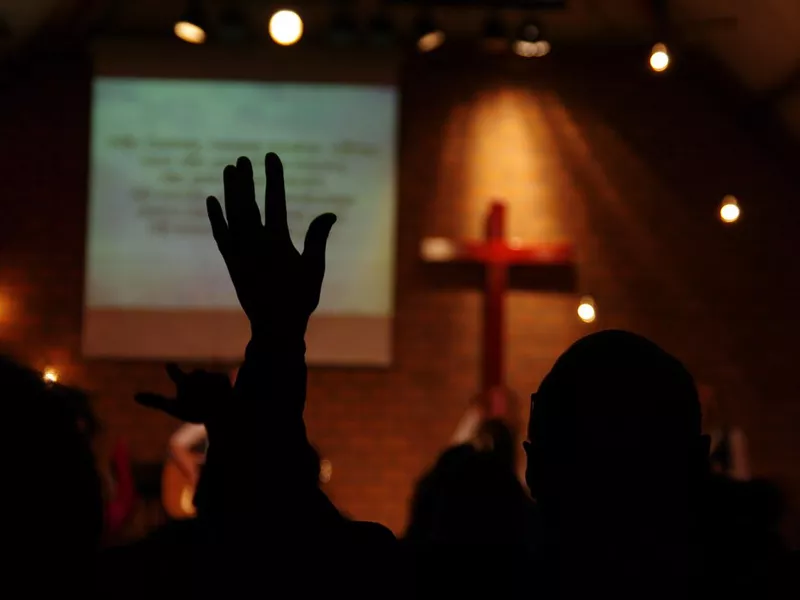
Getty Images
Evangelical Protestants take the Bible the most seriously. They believe it’s the true word of God and that having a personal relationship with Jesus is required for salvation. The word “evangelical” comes from Greek roots meaning “the gospel” or “the good news.” Evangelical faith revolves around the good news brought to sinners by Jesus Christ, bringing hope for salvation. Being “born again” is a big part of their belief, stressing that members need to go through a conversion process to truly reject their sins.
Generally, Evangelical Protestant church services are divided into multiple parts, including a sermon, congregational singing and the practice of intercessory prayer — praying on behalf of another. Interestingly, this Protestant denomination loses fewer followers to atheism and agnosticism than many others.
An Evangelical Protestant Who Looks Familiar: Justin Bieber
Like Wahlberg, Justin Bieber hasn’t been shy about his faith. He has posted publicly about evangelical Christianity more than once, attending Hillsong, a Pentecostal megachurch. His wife, Laura Lentz, frequents Hillsong consistently too.